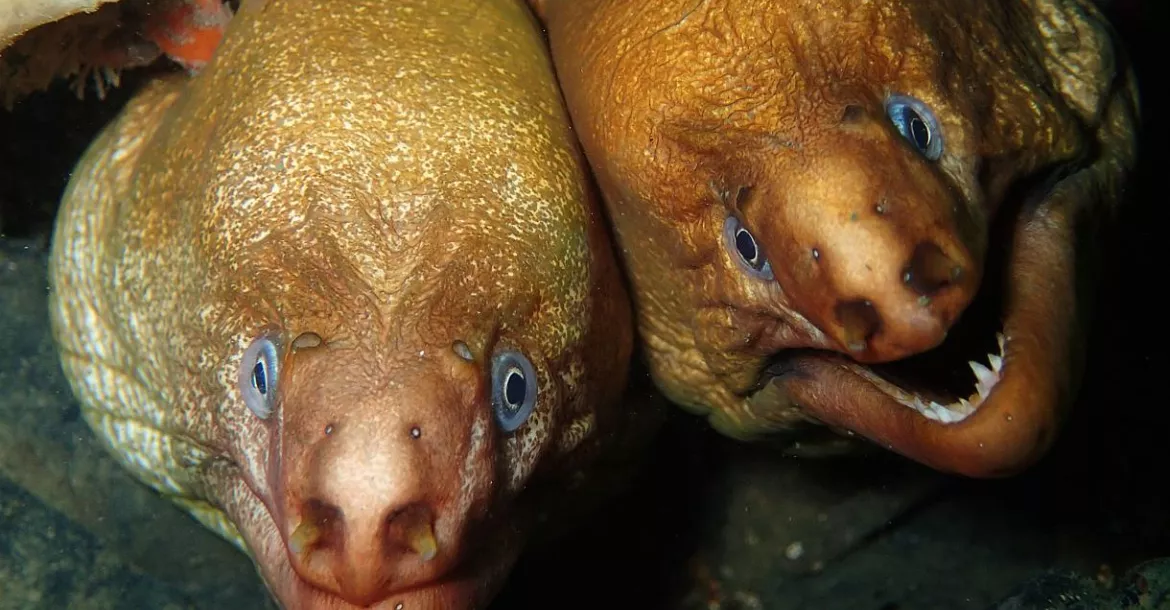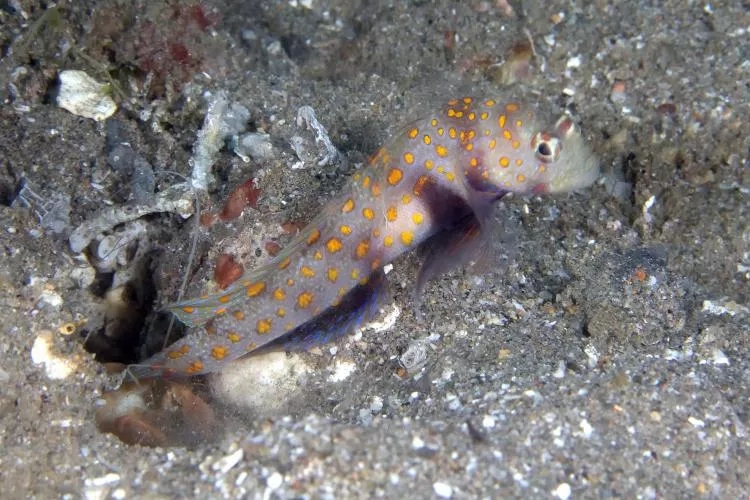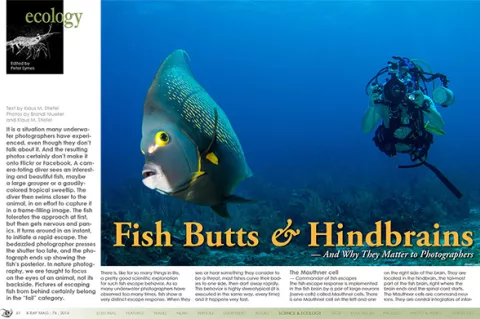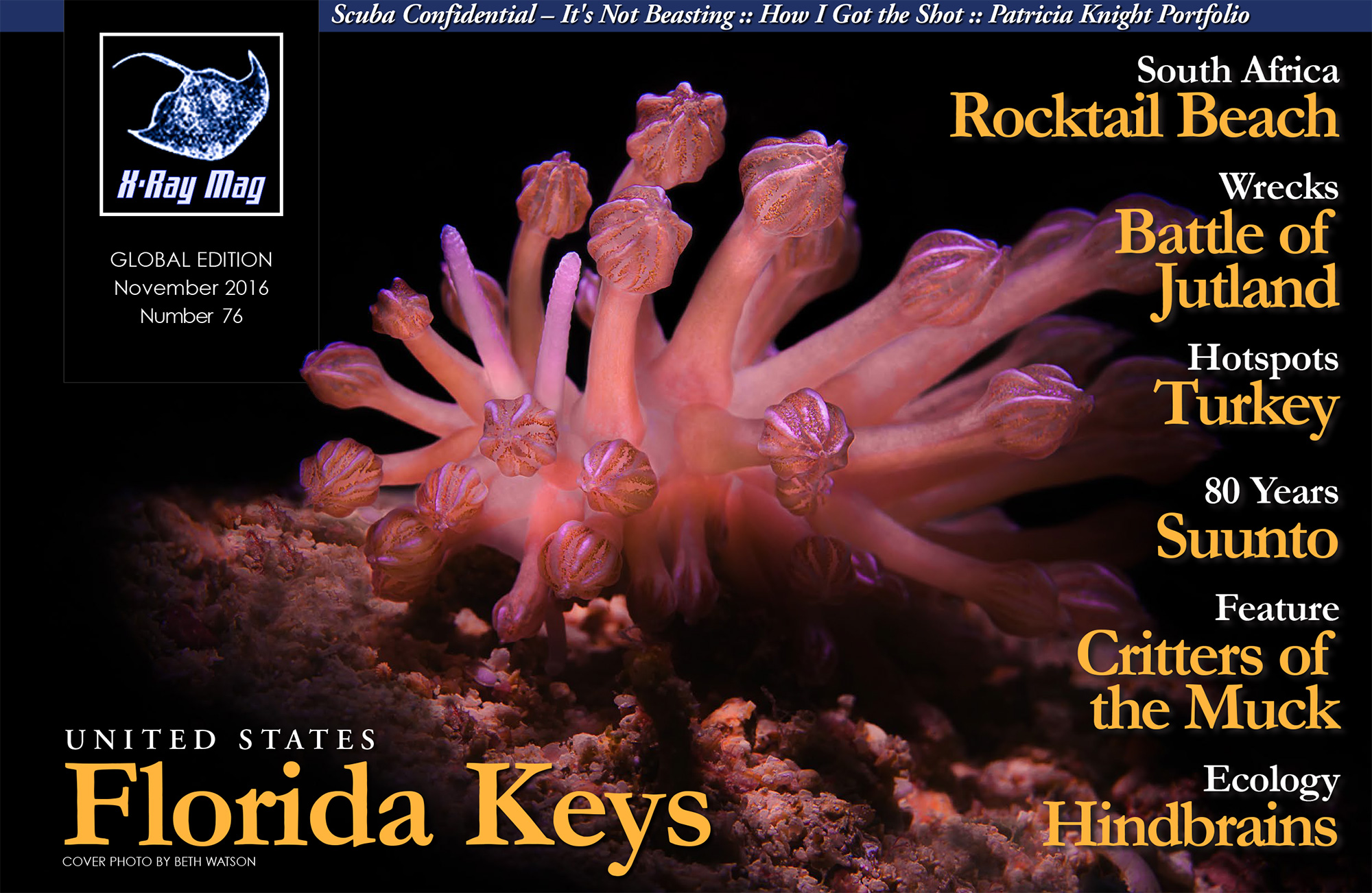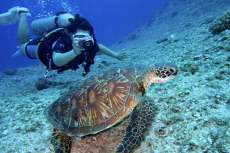— And why they matter to photographers
Contributed by
Factfile
Dr Klaus M Stiefel is a biologist, underwater photographer and PADI Tec Deep instructor based in the Philippines.
His blog is found at: Pacificklaus.com.
It is a situation many underwater photographers have experienced, even though they don't talk about it. And the resulting photos certainly don't make it onto Flickr or Facebook.
A camera-toting diver sees an interesting and beautiful fish, maybe a large grouper or a gaudily-colored tropical sweetlip. The diver then swims closer to the animal, in an effort to capture it in a frame-filling image. The fish tolerates the approach at first, but then gets nervous and panics. It turns around in an instant, to initiate a rapid escape.
The bedazzled photographer presses the shutter too late, and the photograph ends up showing the fish's posterior. In nature photography, we are taught to focus on the eyes of an animal, not its backside. Pictures of escaping fish from behind certainly belong in the “fail” category.
There is, like for so many things in life, a pretty good scientific explanation for such fish escape behavior. As so many underwater photographers have observed too many times, fish show a very distinct escape response. When they see or hear something they consider to be a threat, most fishes curve their bodies to one side, then dart away rapidly. This behavior is highly stereotypical (it is executed in the same way, every time) and it happens very fast.
The Mauthner cell: Commander of fish escapes
The fish escape response is implemented in the fish brain by a pair of large neurons (nerve cells) called Mauthner cells. There is one Mauthner cell on the left and one on the right side of the brain. They are located in the hindbrain, the tail-most part of the fish brain, right where the brain ends and the spinal cord starts.
The Mauthner cells are command neurons. They are central integrators of information relevant to escaping, and they send out commands to the spinal cord to initiate the escape.
The input to the Mauthner cells come from all sensory modalities, most prominently from the fish's eyes and auditory system. Electrical impulses from the eyes reach the Mauthner cells indirectly (via a brain area called “optic tectum”), and from the sound-sensitive hair cells directly.
The output of the Mauthner cells go to the neurons of the spinal cord, which then activates the muscles in the tail. The fast twitching of these muscles causes the fish to rapidly escape.
Interneurons
There are also a bunch of smaller neurons connected to the Mauthner cells, called inhibiting neurons or interneurons. These neurons inhibit the nerve cells to which they are connected.
One set of interneurons makes sure that only one of the Mauthner cells (left or right) is active during an escape reflex. Another set of interneurons cuts off the sensory inputs reaching the Mauthner cells after a short time.
In this way, they make sure that only rapidly changing sounds or sights activate the Mauthner cells and subsequently the escape reflex. Any persistent, non-changing sound or sight will not activate the Mauthner network.
So, basically, the Mauthner cell is the commander of the fish escape reflex. Just like a military commander, it receives all kinds of information (about sights and sounds from the sense organs of the fish), and then decides whether to initiate action (the escape reflex) or not.
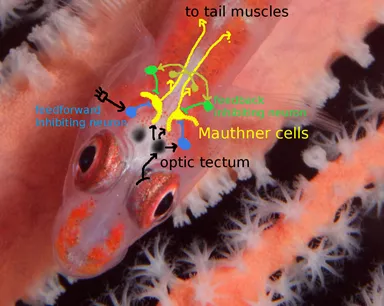
Research
The fish escape reflex and the Mauthner cell have been studied since the 1960s, with a variety of gnarly scientific methods like: filming fish escapes at high speeds; sticking tiny electrodes into Mauthner cells; and measuring the calcium levels in these cells with the help of genetically engineered dyes and lasers.
A search in the scientific literature shows a total of 591 scientific papers featuring the term “Mauthner.” If we estimate that each paper took a year to complete, then that's about 12 full working lifetimes’ worth of Mauthner cell study. Now, that's a lot of science.
Lessons for photographers
So, what lessons can we as underwater photographers learn from the scientific study of the Mauthner cells?
No warning. Firstly, the Mauthner is a thresholding device. It constantly receives information from the fish's senses, but does not react until the inputs together reach a certain threshold. Then, all of a sudden, it sends an output to the spinal cord and starts the escape. There might be no warning in the behavior of the fish you are approaching that an escape is immanent up to the point when it is too late. Sounds and sights just below the threshold might not make the fish seem even a bit nervous. Sensory inputs just a bit above the threshold will make the fish execute its full-blown escape behavior.
Be small and quiet. Secondly, in the decision whether or not to initiate an escape response, the Mauthner cells of the fish evaluate visual and auditory cues. That means that if the fish sees something threatening or hears something threatening, both factors enter into the decision whether or not to flee. So, as underwater photographers, we need to avoid being noisy and looking big and scary. But we especially need to avoid doing these things at the same time.
No bubbles. If you are swimming at the fish (and your image in the eyes of the fish changes), don't exhale noisy bubbles; if you exhale, stop your approach for a few seconds.
No noise, please
Naturally, it's best to avoid noise and visual disturbances altogether. Unfortunately, the aforementioned exhalation bubbles are quite loud. What can you do against these noisy bubbles when trying to photograph a shy fish? As a PADI instructor, I can’t recommend holding your breath while scuba diving! But there are ways to avoid noisy bubbles underwater.
Exhale slowly. One way is to exhale very slowly, through your nose and mask. That breaks up the bubbles into smaller, less noisy ones.
Use a rebreather. Or, you could use a rebreather. Advantage: no bubbles. Plus, a lot of extra dive time, and the breathing feels pretty much like on the surface, with nice moist air. In addition, everyone sees that you are one of the cool kids, with one of these fancy units strapped to your back. Disadvantage: looking at your bank account after acquiring your rebreather.
Freedive. Another possibility is to shoot photo and video while breath-hold diving. I shot this mini-documentary about veeery skittish gobies purely on apnoe. Holding your breath is free, but you can stay underwater for only so long before brain damage and death ensues.
Approach slowly. A slow approach helps to keep the fish calm – your image on the retina of the fish should change slowly. Any seasoned underwater photographer intuitively knows this.
The Mauthner cells like changes. The fish's Mauthner cells react best to temporally changing stimuli, both visual and auditory. An escape response is most likely triggered when a sound gets louder or when an image in front of the fish rapidly grows – which probably means something is approaching the fish.
I like to think of myself as the anti-Michael Phelps: I am a champion in swimming slowly. Nobody can do the last half-meter between camera and goby slower then me. My dive buddies claim that some of the faster tectonic plates have overtaken me on some occasions. All of that slowness keeps the Mauthner cells of the fish in front of my camera lens from activating.
Slow escapes in cold waters
The fish escape reflex also shows a pronounced temperature dependence. Most biological processes run about twice as fast when it gets 10°C warmer. This is true for both the Mauthner cells as well as the tail muscles they activate.
The temperature difference between a tropical coral reef (~28°C) and an alpine lake (~8°C) is about 20°C, and we can expect fish brains and muscles to work four times slower in the Alps. If you are not one of those vacation-only, warm-water divers, you will notice that fish in temperate or cold oceans take longer to initiate and execute an escape—now you know why.
Diverse fishes with diverse escape behaviors
Lastly, the study of the fishes' Mauthner cells taught us how different the escape reflex works in different fish species. There are about 20,000 species of fishes known to science, and a survey of the Bird's Head Peninsula in West Papua has found 1,300 coral reef fish species.
Even on your average tropical diving vacation, you could see a few hundred different fish species. Each of these species will have a Mauthner neuron-commanded escape system, which fits the environment it lives in and the predators it faces.
It is actually rather surprising how similar the escape reflexes are between species so distantly related as trouts and goldfishes (a carp relative), as you can see in the figure below. Still, other species show very different escape reflexes.
One study found that an eel retracts its head instead of bending and escaping. The rockfish, well-protected by its spines, shows a much weaker and slower escape reflex, and moves forward rather than escape sideways. These differences in fish behavior are reflected in differences between the connections of the species' Mauthner cells.
The diagram above shows the “typical” zebrafish (a member of the carp family) Mauthner cell and its connections. I drew it on top of a skull of a goby, and I assume that given the similar escape behavior in gobies, the Mauthner neuron network will look very similar. But in eels, rockfish and garfish, the diagram would look slightly different.
One species at a time
Underwater photography legend Marty Snyderman is known to recommend concentrating on photographing “One species at a time!”. By this, he means that an underwater photographer needs to study the escape behavior of each fish species separately.
To learn what scares one species of fish away, and what does not; and to study how to approach that particular species with your camera, one needs to get into the fish's head. So what Marty really means is that underwater photographers must crack the functioning of the Mauthner cell of just one species at a time. ■

